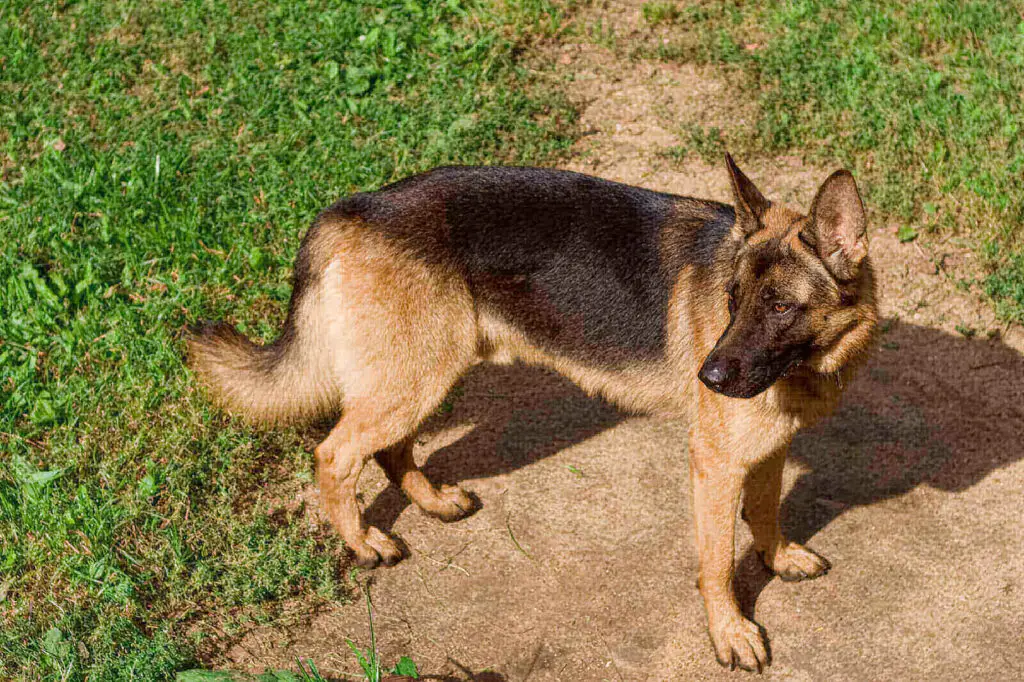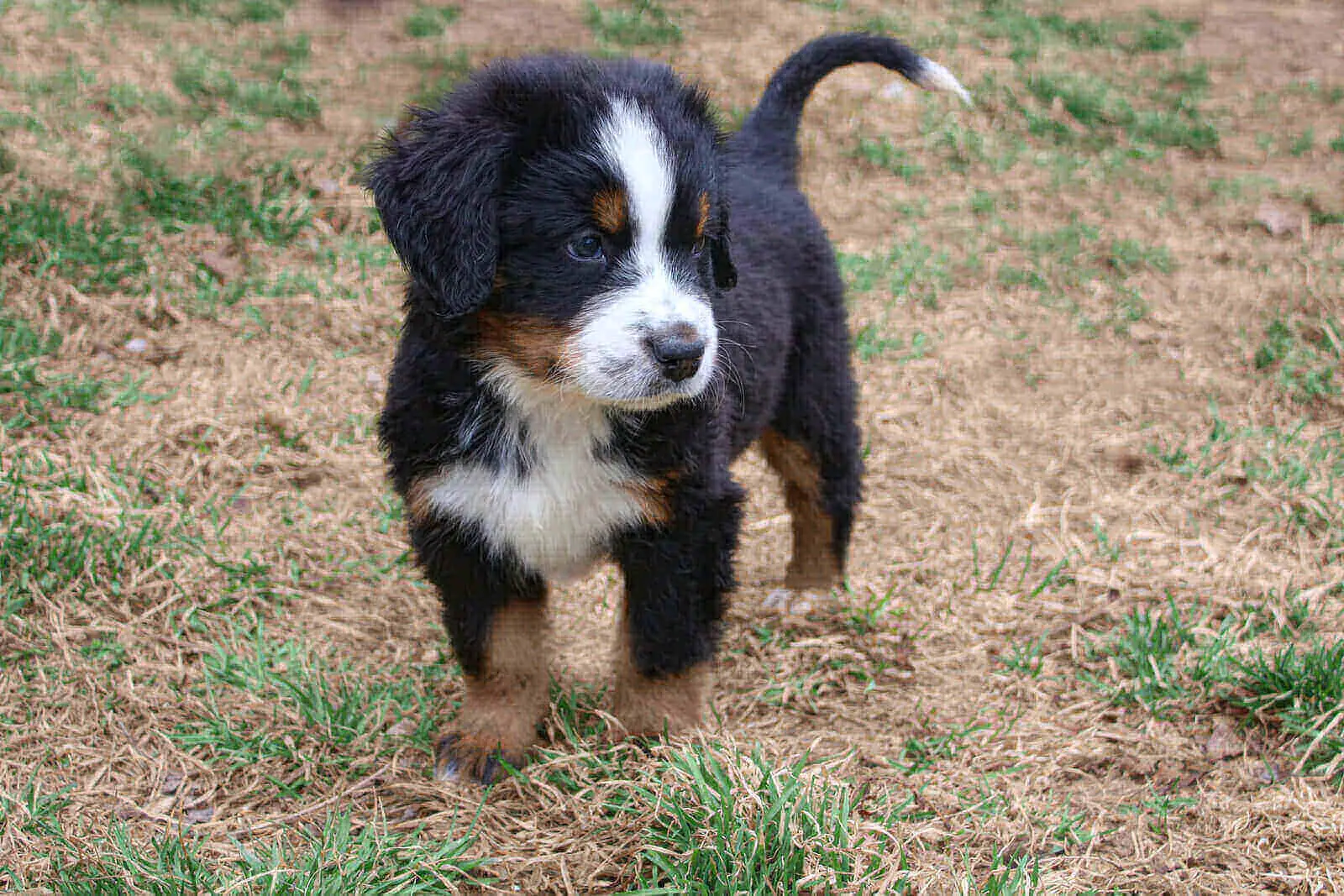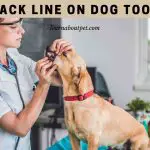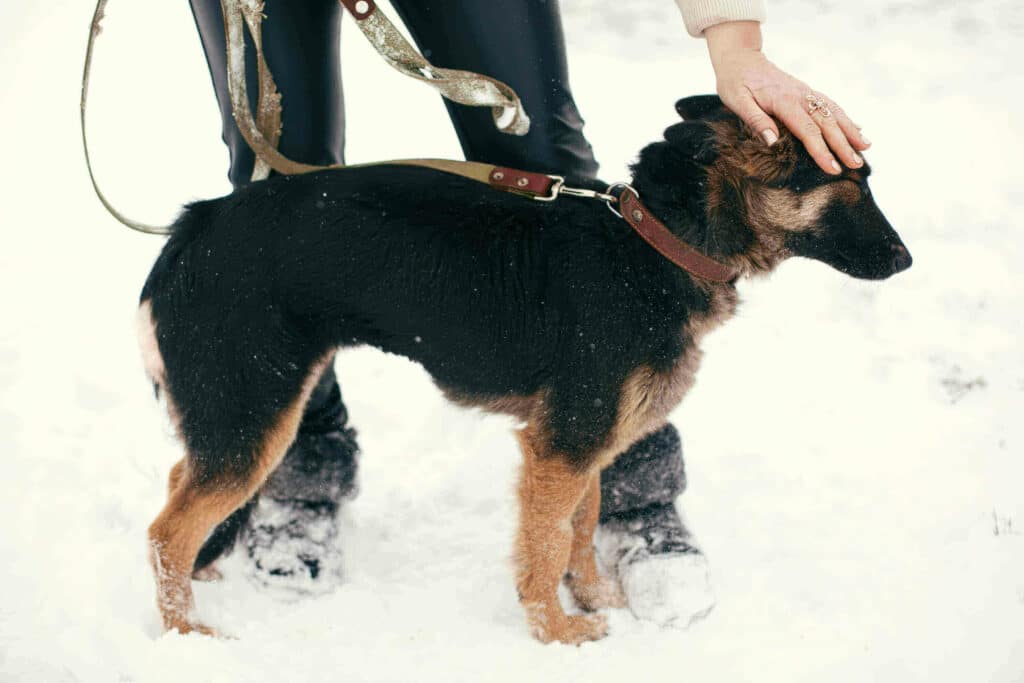A lot of discussions are going around on the straight back German shepherd versus the sloped back German shepherd.
The German shepherd dog (Alsatian in some countries) is a very popular breed of a large dog known for its intelligence, loyalty, and energy.
Both breeds will be discussed here to see the difference between straight back and sloped back German shepherd and their suitability for adaptation.

What Is A Straight Back German Shepherd?
This is the oldest name used for the breed of German shepherd dogs used by German farmers. Terms like flat back German shepherd, working line, old fashioned are also commonly used for the straight back German shepherd.
Such terms are used to differentiate the breed line with peculiar phenotypes or skeletal physique from its other breeds.
Originally a crossbred with the wolf, German shepherd dogs had been used for centuries by the German farmers to control/herd and safeguard their cattle, especially sheep on their farms.
They were preferred for such jobs mostly because they outclassed other dog breeds in the qualities needed like higher intelligence, ability to train easily, vigilance, agility, loyalty, and strong stamina.
By the late 19th century a formal lineage structure had been introduced in Germany for the pedigree of straight back German shepherd or flat back German shepherd dogs. These were mostly defined as working-class shepherds.
This formal classification of the breed helped induct these dogs into the police and military, for guard duty, as guide dogs for the handicapped, search and rescue dog, courier service, Red Cross duties, and K9 operation.
Besides the farm work, an adaptation of the straight back German shepherd as a family dog had always been very popular.
In the early 20th century the straight back German shepherd was introduced in America and soon won positions in the dog shows, showing its growing popularity with the public.
What is a Sloped back German shepherd?
Simply put the sloped back German shepherd is a crossbreed alteration from the straight back German shepherd or the flat back German shepherd (same thing).
Just a few years after formalization of the standardization rules for German shepherd dog breeding, conflict arose amongst members of the society.
The moot point being what should be the principal traits for standardization-appearance or working ability.
Most believed that characteristic traits found in flat back German shepherd like, ability to reason, calmness and easiness, alertness, strength, and being protective of its owner and stock were more important than just aesthetic appearance and gait only.
By end of the 19th century, the straight back German shepherd breed was introduced in America.
With the growing popularity of dog shows in America, dog breeders started manipulating the physical and cosmetic traits such as lower hindquarters or sloping back.
The aim being to have more beautiful-looking shepherds as per their wishes and demands of people, to win trophies in dog shows.
The demand for the slant back German shepherd and more profits for the breeders helped populate this variety in a few decades in the early 20ies.
This started the ‘show line’ breed of shepherds as compared to the earlier ‘working line’ shepherds.
It is claimed that the sloped back German shepherd has a peculiar gait, liked by many enthusiasts.
Are German Shepherds Supposed To Have Sloped Backs?
The answer is No. The original straight back German shepherd was a crossbred with a wolf, had straight back.
The straight back was very natural and aided the GSD in its farm duty of herding sheep all day, without tiring it. That is why it is also called working line German shepherd.
The sloped back German shepherd is a cross of the straight back German shepherd and other dog pedigree to have some different traits.
Is your German Shepherd Skinny?
Why Do Show Line German Shepherd Dogs Have A Sloping Back?
Why do show line German Shepherd dogs have a sloping back while working line German Shepherds have a straight back? The true difference between straight back and sloped back German shepherd is that the latter (sloped backed) is a crossbreed of the former (straight back).
The so-called sloped back or slant back German shepherd or the ‘show line’ GS also has its back (spine) straight, but looks somewhat sloping due to ‘angulation’ of rear haunches, brought about through cross-breeding.
The correct angulation is achieved by having shorter back legs, short stifle joint, and longer hip sockets. This results in an awkward gait, which is not helpful for the all-day energetic fieldwork on the farm. It tires out the dog quickly.
The natural form of a straight back of the flat back German shepherd dog is important for trotting all day and performing its job for what it is bred for.
Normally a dog’s back is always straight and almost horizontal when it stands on its four (two stack position).
The sloped back German shepherd is bred purely for the looks and appearance-like, gait, posture, color, hair, etc. & not for working strength.
The important thing is the dog’s back should not be ‘roached’. This is a disqualification for competition as per AKC rules.
By ‘stacking’ the dog in a particular pose, its body angles and posture appear quite different than normal and hide or make prominent certain contours in the picture.
Only an expert and breed specialist can judge well from the picture, as to the true breed/lineage of the dog.
Slant Back Or Straight Back German Shepherd? Which One Is Better?
The difference between straight back and sloped back German shepherd was created to have different looking qualities like gait, body shape, color, size, etc.
Primarily the flat back German shepherd is more suited to outdoor activities and farm work. Whereas the latter is for dog shows and for adaptation for home.

Why do German shepherds walk weird?
Besides the lower back, the other main difference between straight back and sloped back German shepherd is the gait of the latter.
The old-fashioned or the straight back German shepherd performed its functions perfectly all day long for which it was bred-trotting. Working on farms and assisting in herding cattle/sheep and never getting tired.
With the development of show line or slant back German shepherd, modifying of the body skeletal & muscular structure to lower the back, impacted the gait.
The difference is not in the spine or back but rather in the hips and hind legs. This produces a different gait.
Although not a defect, but this angulation does not help the dog to perform for long hours in the field doing shepherding jobs, or jobs requiring stamina and power.
Why Are Sloped Backs A Desirable Trait In German Shepherds And Other Breeds?
A working line or straight back German shepherd cannot perform its job well with a sloped back structure. It is not a desirable trait and has been observed practically.
The desirability for the sloped back is purely a personal preference. The idea of some breeders is a walk with bouncy movements as if floating, produced by sloping back.
The sloped back German shepherd is purely a show dog, not meant for heavy work like for herding, rescue, police, military, or the like.
The slope back or angled back German shepherd is more suitable for light duties like being a home dog, emotional and comfort partner, handicap’s guide & assistant.
How Do I Recognize A Slant Back GSD Puppy?
Straight backed German shepherd puppies can be relatively easily recognized because of their obvious profile. This is much difficult for a slant back GSD puppy, as the features are not fully developed at this stage.
Only an expert in this field can grade a puppy correctly if it is slant back or straight back.
One of the oldest and most recognized association for dog registration the American Kennel Club define the GSDs to have their withers somewhat higher than the lower back, but the back is straight. It should not sag or roach, should be relatively short.
To get further assurance check for the lineage and observe the parents of the puppy yourself.
How To Get A Straight Back GSD Puppy?
The straight backed German shepherd puppies are the original working-class dogs bred for outdoor activity. This breed has entirely different physical phenotypes or skeletal physique as compared to other bloodlines in GSD.
One can start by familiarizing oneself with GSD history and breed. Check with friends and enthusiasts, local veterinary, dog owners, and different GSD clubs. Research about the background and reputability of breeders.
Be mindful of the lineage of the dog or puppy you are acquiring. See its parents and grandparents if possible. This way you can know firsthand if they are straight backed German shepherd puppies.
Don’t pay much attention to the prizes and trophies won by the dog or its parental line in show ring results. Pay attention if any disease has been prevalent in the parents, especially related to bones, like hip dysplasia.
In some instances the police and armed forces breed GSD, to always get the best traits, health & performance they want. Sometimes they offer to the public if they have a surplus kennel.
If budget is no bar, then buy from Germany, where the breeding standards are strictly maintained and no diseased dog is sold.
Do German Shepherds Without Sloped Backs Still Have Back Problems?
This question implies that the straight back German shepherd or the flat back German shepherd have back problems. This is far from true.
According to a study of Canine Genetics and Epidemiology, “German Shepherd Dogs (GSDs) could be predisposed to health conditions such as arthritis because of the way they have been bred in recent decades”.
Osteoarthritis has been generally reported for the sloped back German shepherd, which was partly due to improper breeding techniques, especially by unprofessional breeders for cosmetic traits such as lower hindquarters or a sloping back.
Although the German Shepherds (both straight back and sloped back) are predisposed to conditions like musculoskeletal disorders, cancer, degenerative spinal disorders, abnormal formation of the hip joint, more scientific data needs to be compiled.
With proper in and cross-breeding, most of the disease elements can be overcome to have a healthy pedigree line.
Rather it is the greed and slackness in practicing the standards that results in the misery of the animal.
Which Type Of German Shepherd Is The Best?
The Straight back German Shepherd is helpful for farm work or other domesticated work and outdoor activities. The sloped back German Shepherd is a show dog that can be used for home pet domestication purpose.
Final Verdict – Straight Back German Shepherd
For hundreds of years, the straight back German shepherd or the flat back German shepherd dog had been reared and bred to perform as a herding dog. With selective breeding, the required qualities needed for its job had been bred and maintained.
However, with the popularity of the dog shows and the greed of the breeders for more profits, manipulations started to have show ring superstars.
The show-line completely veered away from the original pedigree. More emphasis was on the outward looks like built, size, colors, body angels, and movement. This was the evolution of the slope back German shepherd.

After some decades it was realized that instead of improving the breed, more diseases had been fused by over manipulation through both overbreeding and poor breeding for desired traits.
As a new buyer for a GSD be it straight back or curved back one must first know why one is investing in the pet and can he afford to give the time, attention, and facility to the newcomer dog.
The prospective buyer should make sure he is investing in a healthy dog and will provide it with a quality life. As a pet lover, it is your duty to do your due diligence to get a healthy dog that you can be happy with for a long part of your life.

Welcome to Learn About Pet. My name is Rajkumar Ravichandran and I love all pets, travel, and amazing food. I write about my passion and personal experience caring for multiple pets in this blog! ❤️
Post Disclaimer
DISCLAIMER: THIS BLOG OR WEBSITE, "Learn About Pet", DOES NOT PROVIDE YOU WITH MEDICAL ADVICE AND IS NOT A SUBSTITUTE FOR MEDICAL ADVICE. ALWAYS GET IN TOUCH WITH YOUR PERSONAL VETERINARIAN AND USE INFORMATION HERE AS GENERAL ADVICE.
The information, including but not limited to, text, graphics, images and other material contained on this website are for informational purposes only. No material on this site is intended to be a substitute for professional veterinary advice, food recommendation, diagnosis, or treatment. Always seek the advice of your veterinarian or other qualified health care provider with any questions you may have regarding a medical condition or for pet food related questions.







